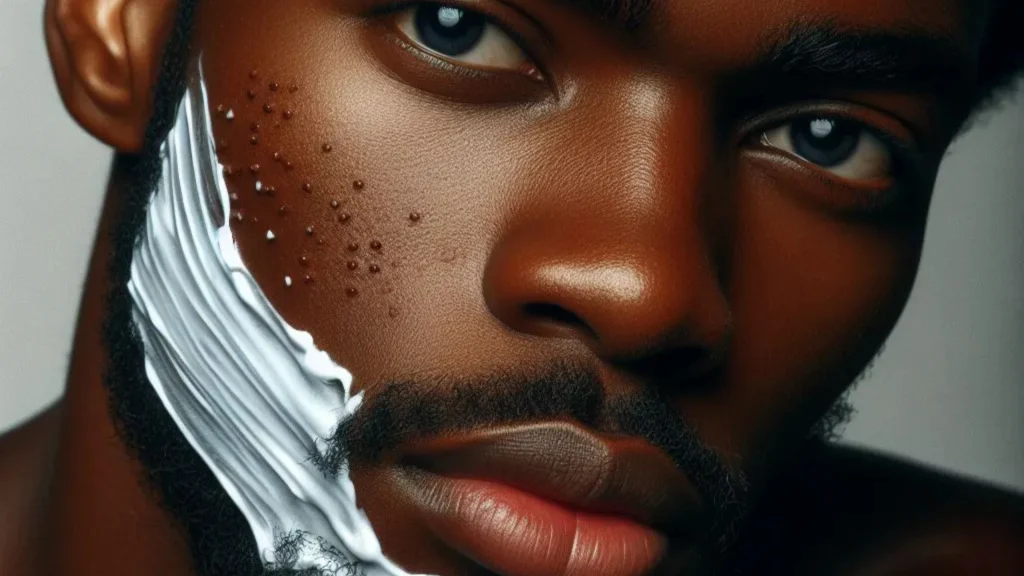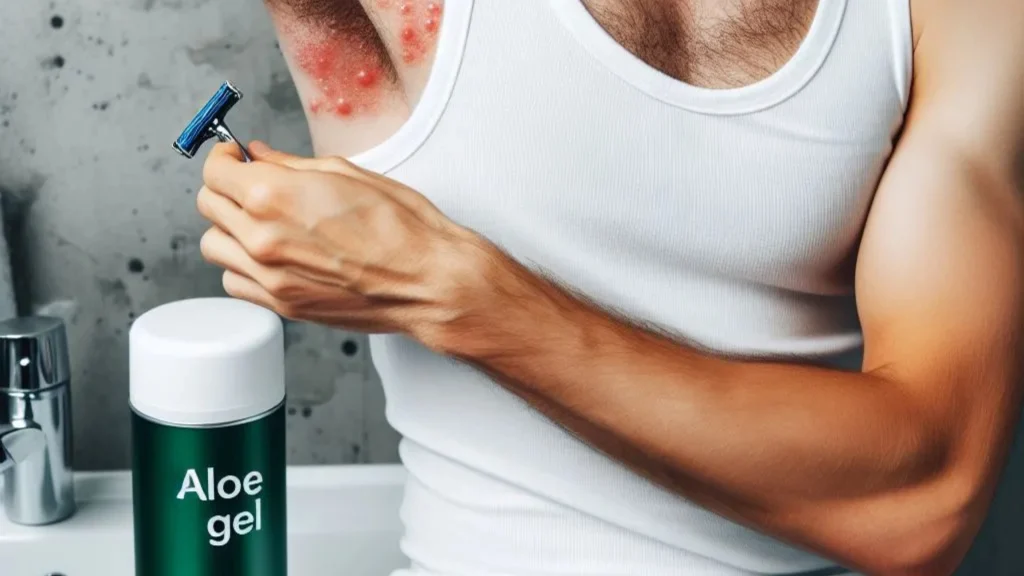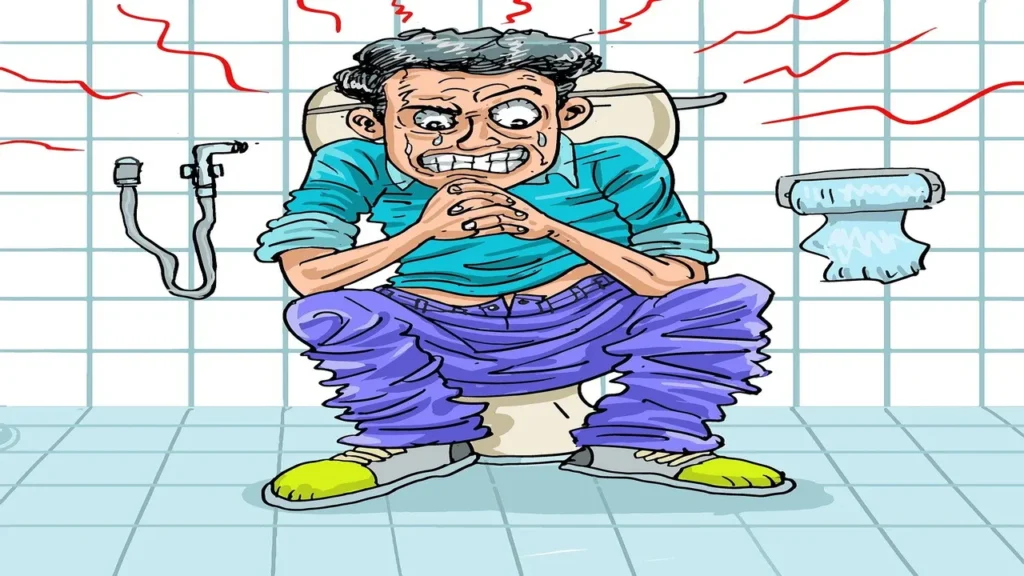
Using aloe vera gel for razor bumps
Razor bumps can be a real nuisance. Those small, red bumps that appear after shaving can cause discomfort, irritation, and can even get infected if you pick at them. But don’t worry – there’s a natural solution to help both treat and prevent razor bumps.
Aloe vera gel has been used for centuries to soothe and heal various skin conditions. With its anti-inflammatory and antimicrobial properties, aloe vera makes an excellent remedy for those unpleasant razor bumps.
Read on to learn why aloe vera is so effective on razor bumps , how to use it properly and after shaving, and extra tips to stop razor bumps in their tracks!
What Are Razor Bumps?

Before learning how aloe vera gel can help, let’s understand exactly what causes razor bumps.
Razor bumps are small, raised red spots that develop after you shave. They are most common in areas where hair tends to be coarse and curl back into the skin instead of growing straight out—places like the neck, armpits, and bikini line.
Razor bumps occur when freshly shaven hairs get trapped under the skin’s surface.
As the ends of the sharply cut hairs grow back, they curl into the skin instead of straightening out.
The hair tries to exit the skin as it grows, causing inflammation and a raised red bump.
These bumps can become very sore and irritated, even leading to infection if they are picked or scratched excessively. Razor bumps usually take a few days to resolve on their own as the hairs eventually grow out, but using aloe vera gel can quicken healing.
Now that you know what causes these annoying bumps, let’s look at how aloe vera gel can help provide relief
Common Locations for Razor Bumps
The areas most prone to ingrown hairs and razor bumps include:
- Neck
- Armpits
- Pubic area/Bikini line
- Face (men who shave)
- Legs
- Underarms
These areas all contain dense hair growth more prone to ingrown hairs. The friction caused by clothing rubbing against freshly shaven body parts also makes the problem worse.
Key Takeaways
- Razor bumps happen but that doesn’t mean you have to suffer with ongoing irritation or infection! By applying aloe vera gel onto shaved skin before and after hair removal, those unsightly bumps can be prevented and treated thanks to aloe’s natural healing properties
- Use pure aloe generously 2-3 times per day directly onto bumps to reduce swelling plus numb pain. And be sure to take preventative measures like exfoliating properly and using sharp razors.
- In most cases staying diligent with an aloe vera gel routine results in bump-free beautiful skin over time. So ditch those razors bumps for good – your skin will thank you!
How to make aloe vera moisturizer
Ingredients:
Aloe Vera Gel (2 tablespoons) soothes, hydrates, and heals the skin.
Coconut Oil or Shea Butter (1 tablespoon): It moisturizes and locks in hydration.
Jojoba Oil or Sweet Almond Oil (1 tablespoon)—lightweight oils that mimic the skin’s natural sebum.
Essential Oils (optional, 5-10 drops) Add drops) and additional benefits (e.g., lavender for calming, tea tree for acne-prone skin).
Vitamin E Oil (optdrops): 2 drops – Acts as a natural preservative and boosts skin repair.
Instructions:
Prepare the Aloe Vera Gel:
If using fresh aloe vera, cut a leaf from the plant, slice it open, and scoop out the gel. Blend the gel until smooth.
If using store-bought gel, ensure it’s 100% pure and free of additives.
Melt the coconut or shea butter:
Gently melt the coconut oil or shea butter in a double boiler or microwave. Let it cool slightly.
Mix the ingredients:
In a small bowl, combine the aloe vera gel, melted coconut oil or shea butter, and jojoba or sweet almond oil.
Add a few drops of your chosen essential oil (if using) and vitamin E oil.
Blend Thoroughly:
Use a hand mixer or whisk to blend the ingredients until smooth and creamy.
Store the moisturizer:
Transfer the mixture to a clean, airtight container (preferably glass).
Store in a cool, dry place or in the refrigerator to extend its shelf life.
How to Use:
Apply a small amount to clean skin, massaging gently in circular motions.
Use daily in your skincare routine, preferably after cleansing and toning.
Why Aloe Vera Gel Helps Soothe Razor Bumps
The aloe vera plant contains a naturally clear gel that has been used topically for centuries to soothe various skin irritations. Modern science has also revealed the active compounds that give aloe its renowned healing abilities.
Soothing Compounds Within Aloe Gel
These healing compounds found in aloe vera gel can benefit razor bumps:
- Polysaccharides – Compounds that reduce inflammation and swelling of the skin
- Gibberellin – A growth hormone that stimulates the growth & anti-microbial activity of fibroblasts. Promotes faster healing.
- Bradykinase – An enzyme that reduces excessive inflammation
- Salicylic acid – Provides relief from itching and swelling while deeply moisturizing
On top of containing these soothing ingredients, aloe vera gel also:
- Soothes redness and inflammation
- Moisturizes the skin without clogging pores
- Creates a protective barrier that prevents infection
By applying these natural healing agents directly onto bumps multiple times a day, aloe vera gel can speed healing time and reduce irritation substantially.
Using Aloe Vera Gel to Treat Existing Razor Bumps

If those dreaded red bumps are already visible after hair removal, promptly apply aloe vera gel to help them disappear quicker.
Directions to Use Aloe Gel on Razor Bumps
- Clean shaved area well with a mild soap and water first
- Pat skin dry with a clean towel
- Apply a liberal layer of pure aloe gel directly onto bumps
- Use enough gel so bumps glisten but not too much that they become drowned entirely
- Allow gel to dry fully on its own
- Reapply aloe vera gel 2-3 times per day until bumps are healed.
Pure aloe vera gel can be generously applied multiple times per day onto existing razor bumps to quicken healing.
Allow it to fully absorb into the skin in between applications.
Continue using aloe gel on any inflammation, spots or bumps multiple times daily until the area has calmed and marks disappear.
This may take 3-5 days for moderate razor bumps.
For large bumps that are sore and swollen, applying a thin layer of hydrocortisone cream after aloe gel can further reduce pain and swelling. The aloe will heal the skin while the hydrocortisone tackles inflammation below the skin’s surface.
But aloe vera should not be mixed directly with other creams or ointments since it can impact absorption. Always allow plenty of drying time first.
Using Aloe Vera Gel Before Shaving as Protection
- Clean area to shave using a gentle cleanser and water
- Rinse skin thoroughly and pat dry
- Apply a thin layer of aloe vera gel evenly across all skin that will be shaved
- Allow gel to mostly dry, about 2-3 minutes
- Shave area slowly with a sharp razor, going in the same direction as hair growth
- Rinse shaved skin well when finished
- Pat dry then apply another layer of aloe vera gel onto skin
The protective translucent layer formed by the aloe vera allows the razor to glide smoothly across the skin with less chance of developing irritation or ingrown hairs. Re-applying more gel right after shaving seals in moisture while also coating any micro-tears or cuts.
Continue this shaving routine of using aloe vera gel as a “shaving cream” and post-shave treatment. The consistent aloe barriers will keep skin bump-free in problem areas.
Other Precautions for Avoiding Razor Bumps
While aloe vera gel works extremely well for both soothing existing and preventing future razor bumps, some extra precautions can also help tackle the problem:
Exfoliate Before Shaving
Exfoliating first lifts dead skin cells and allows hairs to better exit follicles once cut. Use a gentle scrub with soft circular motions right before shaving.
Use a Sharp Razor
A fresh, sharp razor creates clean cuts rather than tugging or pulling hair out unevenly. Replace disposable razors after 5-6 full body uses.
Shave With the Grain
Shave in the same direction that your hair grows not against it. Going against the grain causes more irritation and ingrown hairs.
Avoid Tight Clothing
Wear loose, breathable fabrics around frequently shaved areas like bikini lines. Tight clothes rub on irritate freshly cut hair follicles.
Laser Hair Removal
Laser hair removal is a popular cosmetic procedure designed to reduce or eliminate unwanted hair by using concentrated light beams (lasers) to target and destroy hair follicles. Here’s a comprehensive overview of the process, benefits, risks, and considerations.
Benefits:
Long-Lasting Results: After a series of sessions, many people experience permanent hair reduction.
Precision: Lasers can selectively target coarse, dark hairs without damaging the surrounding skin.
Speed: Each laser pulse treats multiple hairs in a fraction of a second.
Reduced Ingrown Hairs: Unlike shaving or waxing, laser hair removal minimizes the risk of ingrown hairs.
Convenience: Eliminates the need for frequent shaving, waxing, or plucking.
Risks and Side Effects
While generally safe, laser hair removal can cause temporary side effects, including:
Skin Irritation: Redness, swelling, or discomfort in the treated area.
Pigment Changes: Darkening or lightening of the skin, especially in individuals with darker skin tones.
Burns or blisters: Rare, but possible if the procedure is not performed correctly.
Scarring: Very rare but can occur in sensitive skin types.
Laser hair removal is a safe and effective option for long-term hair reduction when performed by a qualified professional. Always consult with a licensed dermatologist or certified technician to determine if it’s the right choice for you.
Conclusion
Aloe vera gel is a proven natural solution for both treating and preventing razor bumps. Its anti-inflammatory properties provide immediate relief while helping prevent future irritation. To get the best results:
- Use pure aloe vera gel 2-3 times daily
- Apply before and after shaving
- Allow full absorption into the skin
- Combine with proper shaving techniques
With consistent use, aloe vera gel can significantly reduce razor bumps and lead to smoother, healthier skin after shaving. While most people see great results with aloe vera, those with persistent razor bumps should consult a dermatologist for additional treatment options.
Remember to do a patch test before first use and discontinue if any irritation occurs.
Frequently Asked Questions
How often should aloe vera gel be applied on razor bumps?
Aloe vera gel should be applied 2-3 times daily directly onto visible razor bumps. Allow full absorption between applications. Continue frequent applications until bumps have disappeared.
Is aloe vera gel still beneficial if my razor bumps are already infected?
Yes, aloe vera has natural antibacterial agents to fight infection plus the soothing compounds to reduce further inflammation. However, badly infected bumps may also require antibiotic creams/ointments if they appear pus-filled and worsening despite aloe gel treatment. See
your doctor if razor bumps are severely infected.
Can I apply aloe vera gel after hair removal if I used shaving cream initially?
Yes, it is fine to apply aloe vera gel atop areas that were shaved using shave creams or gels. Just ensure skin is cleaned thoroughly after shaving before applying the aloe vera. The extra moisture and protective barrier will still benefit.
What concentration of aloe vera gel works best for treating razor bumps?
100% pure aloe vera gel with the highest concentration of aloe works ideal. Or at minimum aim for formulas containing 70-90% pure aloe content. Avoid aloe gels with added alcohols or fragrances which may further irritate skin.
Contents
- 1 Using aloe vera gel for razor bumps
- 1.1 What Are Razor Bumps?
- 1.2 Key Takeaways
- 1.3 How to make aloe vera moisturizer
- 1.4 Why Aloe Vera Gel Helps Soothe Razor Bumps
- 1.5 Using Aloe Vera Gel to Treat Existing Razor Bumps
- 1.6 Using Aloe Vera Gel Before Shaving as Protection
- 1.7 Other Precautions for Avoiding Razor Bumps
- 1.8 Laser Hair Removal
- 1.9 Conclusion
- 1.10 Frequently Asked Questions
- 1.11 How often should aloe vera gel be applied on razor bumps?
- 1.12 Is aloe vera gel still beneficial if my razor bumps are already infected?
- 1.13 Can I apply aloe vera gel after hair removal if I used shaving cream initially?
- 1.14 What concentration of aloe vera gel works best for treating razor bumps?
- 1.15 References
